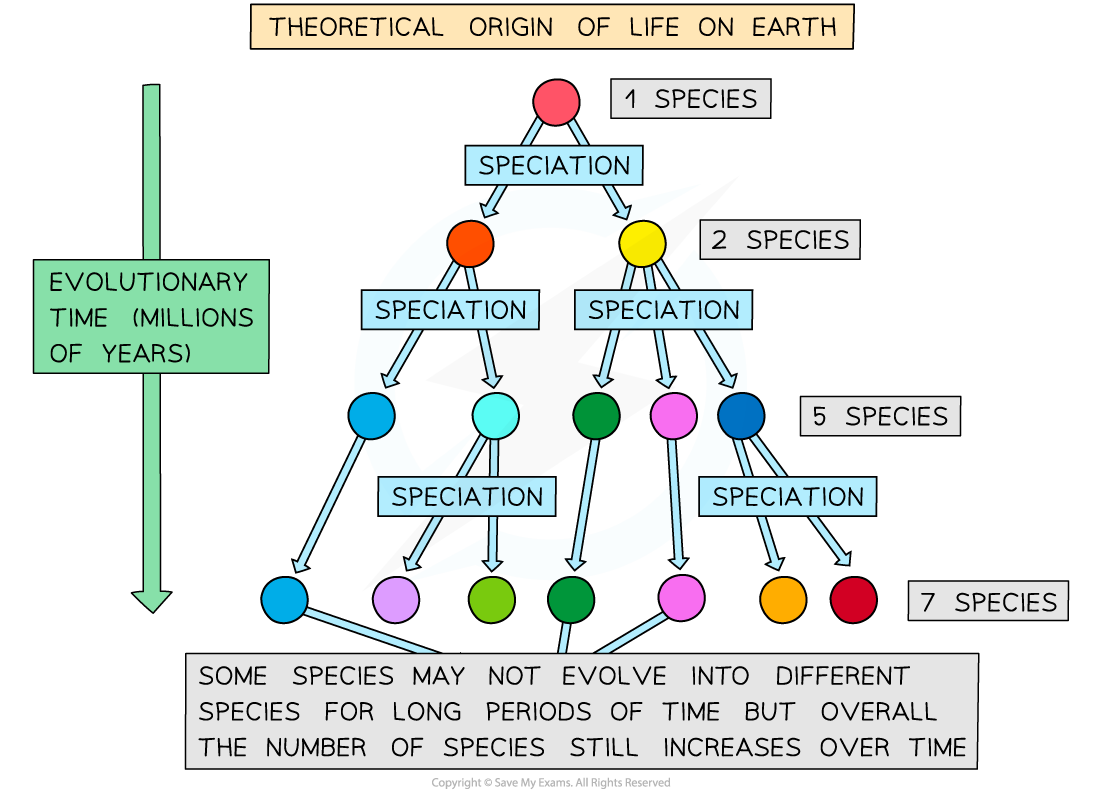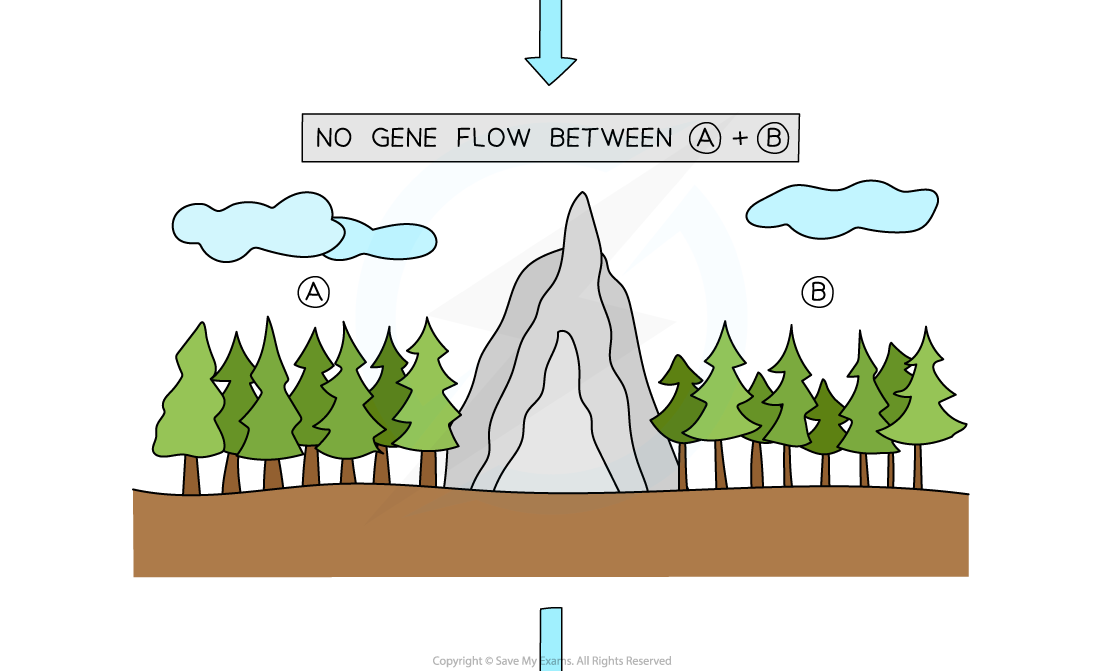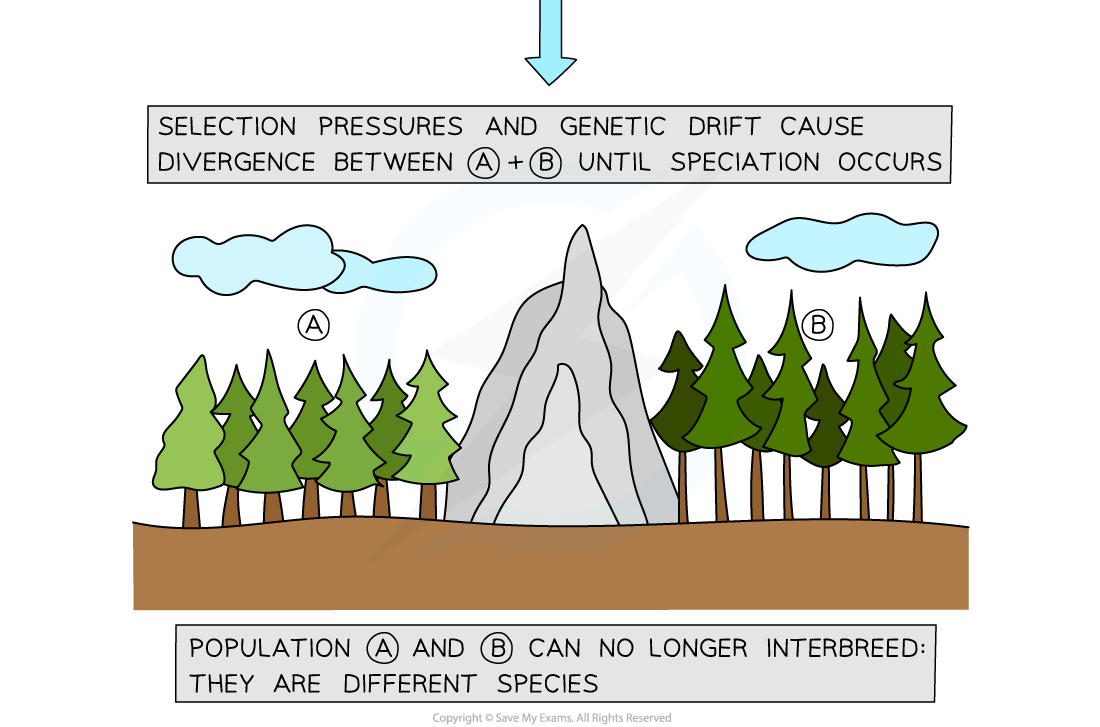Evolution Defined
- Species do not stay the same over time; the species that we see around us today have developed over millions of years
- This process of species change is known as evolution
- Evolution can be defined as:
- Changes in the heritable characteristics of organisms over generations
- Heritable characteristics are those that can be inherited by, or passed on to, the next generation
- Changes in characteristics that are not inherited, e.g. a plant having its leaves eaten, do not lead to evolution
- Heritable characteristics are determined by the alleles of genes that are present in an individual
- Alleles may change as a result of random mutation, causing them to become more or less advantageous
- Heritable characteristics that are advantageous are more likely to be passed on to offspring, leading to a gradual change in a species over time
- This is the process of natural selection
- Changes in the heritable characteristics of organisms can also lead to the development of completely new species
- The formation of new species via the process of evolution has resulted in a great diversity of species on Earth
- Theoretically, at the origin of life on Earth, there would have been just one single species
- This species evolved into separate new species
- These species would then have divided again, each forming new species once again
- Over millions of years, evolution has led to countless numbers of these speciation events, resulting in the millions of species now present on Earth

Evolutionary change over a long period of time has resulted in a great diversity of species
Speciation
- The theory of evolution states that species do not stay the same, but change over time; this can lead to the process of speciation
- Speciation can be defined as:
- The development of new species from pre-existing species over time
- Speciation can result from geographical isolation
- This means that a species is separated into two populations by e.g. being on different islands or different sides of a mountain range
- The ocean and the mountains in these examples are geographical barriers
- This means that a species is separated into two populations by e.g. being on different islands or different sides of a mountain range
- This creates two populations of the same species who cannot interbreed due to being in different places; as a result, no exchange of genes, or gene flow, will occur between them
- The different environmental conditions for the two populations might mean that different alleles are advantageous, so different alleles are more likely to be passed on and become more frequent in each population; this is the process of natural selection
- The allele frequencies in the two populations change over time
- Genetic drift can also affect allele frequencies
- Over time, the two populations may begin to differ physiologically, behaviourally and morphologically to such an extent that they can no longer interbreed to produce fertile offspring; speciation has occurred
Example: speciation in trees
- A population of trees exists in a mountainous habitat
- A new mountain range forms that divides the species into two populations
- The geographical barrier prevents the two populations from interbreeding, so there is no gene flow between them
- The two populations experience different environments, so different alleles become advantageous
- Different alleles are therefore more likely to be passed on in each population
- Different alleles become more frequent in each population
- Over thousands of years, the divided populations form two distinct species that can no longer interbreed to produce fertile offspring



The geographical barrier of a mountain range can lead to speciation in trees
Exam Tip
Speciation commonly occurs after a species expands its range to new geographical areas. This phenomenon is evidenced by the large number of endemic species found on islands such as the Hawaiian honeycreepers; a group of more than 50 bird species found in the Hawaiian archipelago!
